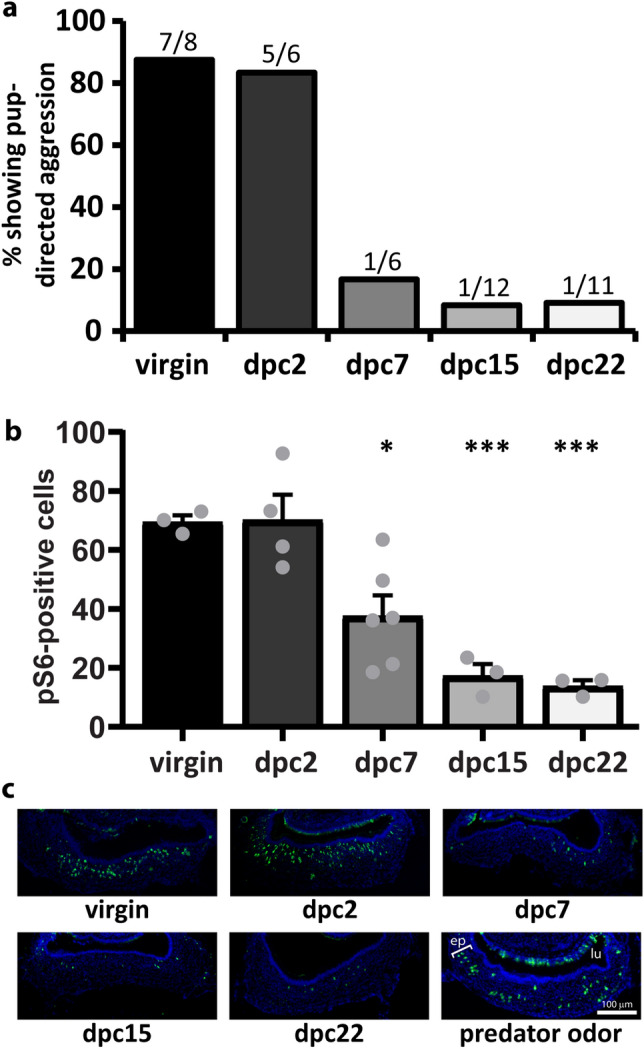Figure 1.

Social experience with a female changes sensory activity and behavior in male mice. (a) Percentage of male subjects displaying pup-directed aggression, depending on the duration of cohabitation with a female (dpc). Groups are virgin mice (without contact with a female), dpc2 (2 days of cohabitation), dpc7, dpc15, and dpc22 (n = 6–12 animals). For each group, the number of aggressive individuals out of all mice assayed is represented above the bar. (b) Number of vomeronasal neurons immunostained for the activation marker pS6 (normalized to 50,000 μm2 of sensory epithelium) in subjects exposed to pup odors in the same groups shown in (a) (n = 3–6 animals; mean + S.E.M.; gray dots represent values for individual mice). *P < 0.05; ***P < 0.001; one-way ANOVA followed by Honestly Significantly Different post-hoc analysis; difference relative to ‘virgin’ group. See also Supplementary Table S1 for metrics of statistical tests and means calculated across all sections. (c) Representative images of VNO coronal sections subjected to pS6 immunostaining (green fluorescence) in groups shown in (a). DAPI nuclear staining is shown in blue. Positive control is VNO from animals exposed to predator odor (cat). ep vomeronasal sensory epithelium, lu vomeronasal organ lumen. Bar 100 μm.
